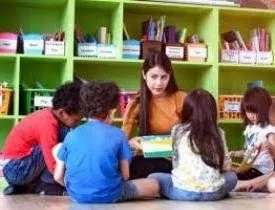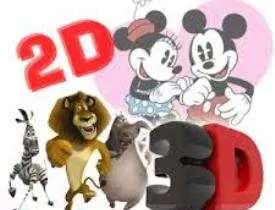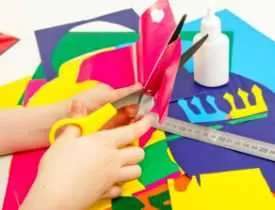Description
Course Name: Diploma in Drawing & Painting Teacher Training
Course Id: DDPTT/Q001.
Education Qualification: 10th Class.
Duration: 370 Hrs.
How You will Get Diploma Certificate:
Step 1- Select your Course for Certification.
Step 2- Click on Enroll Now.
Step 3- Proceed to Enroll Now.
Step 4- Fill Your Billing Details and Proceed to Pay.
Step 5- You Will be Redirected to Payment Gateway, Pay Course and Exam Fee by Following Options.
Card(Debit/Credit), Wallet, Paytm, Net banking, UPI and Google pay.
Step 6- After Payment You will receive Study Material on your email id.
Step 7- After Completion of Course Study give Online Examination.
Step 8- After Online Examination you will get Diploma Certificate soft copy(Scan Copy) and Hard Copy(Original With Seal and Sign).
Step 9- After Certification you will receive Prospect Job Opportunities as per your Interest Area.
Online Examination Detail:
- Duration- 120 minutes.
- No. of Questions- 60. (Multiple Choice Questions).
- 10 Questions from each module, each carry 10 marks.
- Maximum Marks- 600, Passing Marks- 40%.
- There is no negative marking in this module.
| How Students will be Graded: | ||
| S.No. | Marks | Grade |
| 1 | 91-100 | O (Outstanding) |
| 2 | 81-90 | A (Excellent) |
| 3 | 71-80 | A (Very Good) |
| 4 | 61-70 | B (Good) |
| 5 | 51-60 | C (Average) |
| 6 | 41-50 | P (Pass) |
| 7 | 0-40 | F (Fail) |
Benefits of Certification:
- Government Authorized Assessment Agency Certification.
- Certificate Valid for Lifetime.
- Lifetime Verification of Certificate.
- Free Job Assistance as per your Interest Area.
Syllabus
Diploma in Drawing and Painting Teacher Training
Sketching
Types of Drawing, Drawing from Memory, Drawing from Observation, Drawing from Dimensional Information, Drawing from Imagination, Expressive Drawing, Virtues of a Good Drawing, System of Structures, Embedded Similarity and Difference, Appealing Complexity, Unity of Visual Vocabulary, Empathy and Visual Articulation, Organic Unity, Visual Meaning, Anatomy For Artists, Perspective &Theories of Shadows, Nudes, Venetian Sceneries, Landscapes, Expressive Faces, Portraits, The Basics of Comics, Calligraphy, Decorative Patterns, Architectural Scenes, Trees and Leaves, The Seasons, The Horse – Anatomy Plates for Artists, Basic Drawing, Animated Drawing, Architectural Drawing, Artistic Drawing, Geometric Drawing, Mechanical Drawing.
Principles of Drawing
On drawing, on the eye, on seeing and observing, on holding the pencil, on lines, on outline, on sketching, on light and shade, on drawing from flat copies, suggestions for a course of study, on contrast, on relief, on size, on proportion, on symmetry, on securing character in art work, on taste, on style, on motive, on beauty, on fitness, on variety, on unity, on composition, sketch study, picture, pencil in hand measurement, ‘Effect’ for Frontispiece, Lotus plant, Iron bracket for lamp, Hand and pencils, File box,Rectilinear, curvilinear, and compound forms, Irregular form, shoe, convolvulus, stone, Sketch of wheel. Outline of picture, Outlines of faces, Outlines of tree trunks, Diagram, showing rays of light, Illumination of objects, Jar and hoop, showing cast shadows, Blocks, showing reflections.
Pencil Drawing
The art of drawing in lead pencil, materials, elementary technique, advanced technique, the taking of rapid notes, experimental sketches, building up the finished drawing, concerning form, the suggestion of colour, concerning form, the suggestion of colour, concerning style, pencil artists and their work,pencil sketching, pencil sketching, materials and equipment, techniques, sketching composition, sketching from memory, examples, why sketching?Writing position, sketching position, movement of the hand, hand movement, arm movement, lines and strokes, sketching,Materials and Examples of Marks, Ways of Holding the Pencil, Pencil Projects, Other Forms of Charcoal, Charcoal Projects, Theoretical Drawings, Research and Information gathering, Drawing from Nature, Diagrammatic Drawings, Drawing in its own right.
Dry and Wet Painting
Additional materials, colour palette, choosing a basic colour palette, The Teaching Method, painting, principles, Fewer brushes for quicker painting, Fewer paints for easy colour mixing, Fewer techniques for optimal results, Coloured ground, Contrast & value, Composition, Colour mixing, Perspective, Negative space, Glazing, Coloured Ground, How to choose a paint starter, set for beginners, Negative Space, Glazing,how to draw, how to paint, colour mixing, still life, masterclass, portrait courses, sketching courses, urban sketching, landscape sketching, Venice sunset, Scope and General Introduction, Surface Preparation Methods, Paint Application, Inspection and Testing of Paint Material.
Glass Painting
Tools and Raw Materials, Making Process, Products, Video, Contact Details, Making Process, methodology, antique glass, The painter’s environment, Beliefs influencing artists’ practices, The art historian and art research, Artists and art research, Technical approaches used for creating the illusion of volume, Varnish, Grounds, Viewing Distance, and Lighting: Some Notes on Seventeenth-Century Italian Painting Technique,The use of varnish, Absorbency of the grounds, Viewing distance and lighting, Encaustic painting, Fluoric painting, Glass and glass transfer , Aspects of Painting Technique in the Use of Verdigrises’and Copper Resonate.
Memory Drawing
Advanced Memory Drawing, Sculptural Memory Drawing, Sage Advice from Pere Lecco, Harold Speed: Visual Memory, Facets or Curves? Copying Old Master Drawings, An Artist’s Outward Vision, Memory’s Role in Imagination, Invention and Selection, inking and unthinking? the First Method of Drawing that Teaches Anything, Robert Catter son-Smith and “Shut-Eye” Drawing, Lutz’s Approach: Verbal and Visual, Photographic Memory, Shape, Value, Color, Attention, Doubling Down, Start Staring, Association and Caricature, Finger Tracing, Seeing and Knowing, Everything is Relative, Abstract Shapes, Grecian Urn Forms, Memory and Anatomy Training, Old Master Drawings, Evening Figures, Natural Forms, Squint and See the Forest.
Portrait
To be able to understand and do an assignment in Contemporary art trends in the Painting, They will develop an understanding of different materials and how to do experiments with them, They will also gain the understanding that in order to achieve creativity certain norms are to be moulded. They will learn how to mould the norms, both in the thought process and in execution, handle the basic skills at an advance level for the expression of their thought, use of their theoretical knowledge for preparing the sketches and final art work.







